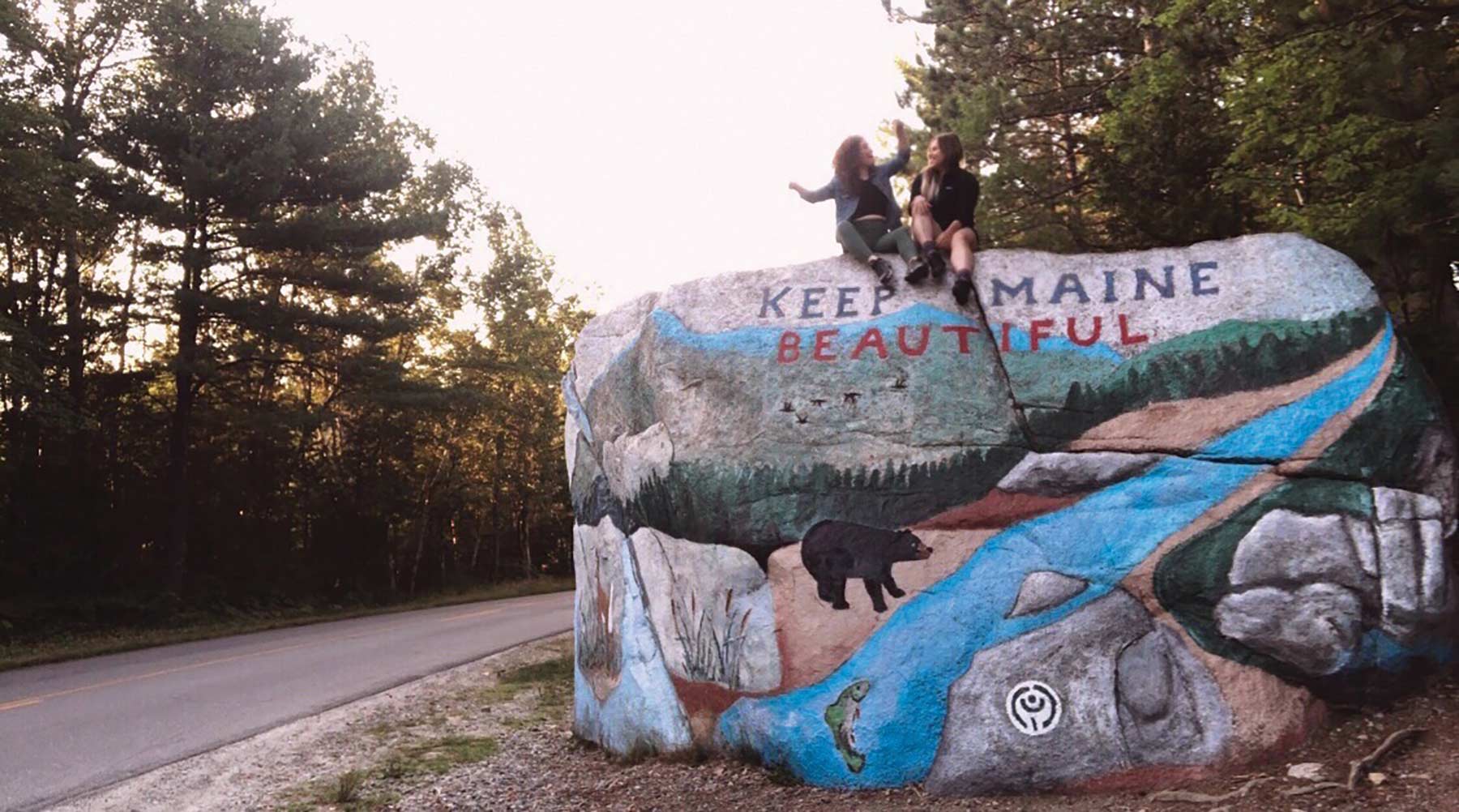In 1941, the Appalachian Trail Conference held its last meeting before the end of World War II. That final meeting was about preparing for war. Some of those involved in the conference were active-duty military and had been called to serve. During that time, my family was already in the war. By 1941, their shtetls and hometowns had been turned into ghettos or had been burned to the ground during the Nazi invasion of Poland. I often think about the parallels of that — how the planning of one of the greatest hiking trails in the world grounded to a halt during one of the darkest chapters of human history.
But by 1948, the world was experiencing a profound sense of rebirth. That year, the United Nations adopted the Universal Declaration of Human Rights, asserting that everyone has a right to freedom of movement and thought. In 1948, the Appalachian Trail Conference held its first meeting since the war to continue the work of the A.T. In 1948, a World War II veteran, Earl Shaffer, became the first A.T. thru- hiker — an attempt to “walk off the war.” That same year, in 1948, my dad was born in a displaced persons camp on the island of Cyprus to two Holocaust survivors — one of about 2,000 children born there to survivors fleeing Europe after the war.
Somehow, all four of my grandparents survived the Holocaust. They arrived in the United States filled with hope and a deep sense of gratitude for their adopted country. While they’d never return to the landscapes of Eastern Europe again, they began creating new memories in America. Flipping through family photo albums, I watched their lives return to color again. There were photos of the family in redwood forests, on the beaches of California, gliding in a boat across Lake Casitas with relatives visiting from Israel. The reality is that some survivors didn’t die and others came back to life. The landscapes of the United States were a place where my grandparents experienced a kind of vitality that had been drained from them in the forests of Poland. There, my grandfather dug holes in the ground to hide from the Nazis and their collaborators. But in America, the landscapes signified a renewed sense of freedom and autonomy.
My grandparents didn’t identify as outdoor enthusiasts. They didn’t talk about hiking, though certainly they’d walked along many trails. They didn’t own hiking boots or special hiking clothes. They didn’t look like other Americans who had generations of experience with camping and outdoor recreation. In fact, I never heard them use the word “camp” to describe anything remotely recreational. “Camp” was a special term used sparingly and primarily to describe a place they never wanted to go again.
I don’t think my grandparents thought too much about conservation either. Not being native English speakers and being primarily concerned with earning a livelihood, they didn’t have the luxury of involving themselves in big ideas. My grandfather painted homes for a living. My grandmother worked in sewing factories in Los Angeles. Later, after graduating from UCLA, my dad started a car stereo business and my family joined in on it together. They were glad they had places of refuge in their new country, but they didn’t pay a lot of attention to how those places came to be and why. And who can blame them? When you’ve been excluded from places for so long, you engage with them differently.
But being a generation or two removed, I have the luxury of contemplating those bigger ideas and creating a much more intentional life for myself. When my sister started school at Smith College a few years ago, we decided to take a road trip through New England. I had heard of the Appalachian Trail and we thought it would be cool to take a hike on it, so we picked Katahdin. Though I grew up hiking in the trails around my home in California, Katahdin was the first time I connected the concepts of conservation and recreation. I stayed up all night before the hike reading about the history of Baxter State Park and the Appalachian Trail. It was such a transformational experience that two days later, my sister and I got the outline of Katahdin tattooed onto our arms. Three months later I joined the Appalachian Trail Conservancy as a staff member.

Being surrounded by those with deep roots in the Appalachian Trail and its history, I am acutely aware of the fact that I am an outsider here. Coming from a family of immigrants, it feels like you’re always playing catch-up to those who have deep roots in our country. But one thing I see in the culture of the Appalachian Trail and in my own immigrant family is the following — a commitment to honest hard work, a deep appreciation for natural beauty, and a desire to take exceptional care of a country that has given us so much.
As Vice President of Advancement, I am not looking for ways of bringing “outsiders” in, I am constantly challenging the idea that any of us are outsiders. We are, first and foremost, just people. And however we encounter and love the Trail is enough. This freedom that the A.T. provides is for all of us. Having a place to come alive, to heal, to connect and disconnect, these are fundamental human needs. Choosing to protect the A.T. is choosing to protect some of our most deeply held values and beliefs as Americans. Whether you’ve been here for ten generations or have just arrived, it’s going to take all of us coming together to protect this great manifestation of freedom and to carry the A.T. forward.
To everyone who has made the A.T. possible, thank you.